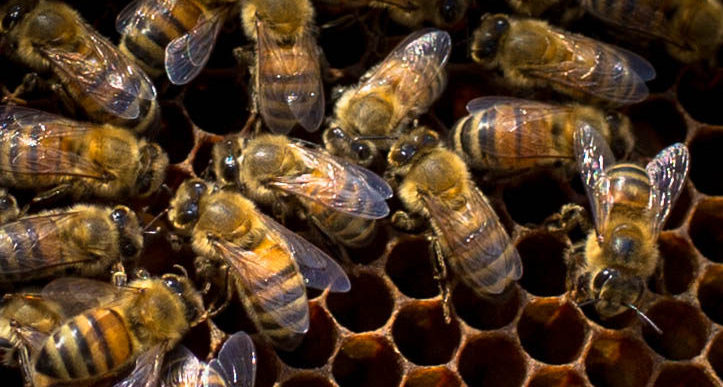
Let’s chat about honey, shall we?
Most folks think chocolate is what makes our bars so special. While we agree that cacao is an incredible superfood (see our post about that here), it is the raw honey that we use to sweeten our bars that makes them so unique. Raw honey goes way beyond just being a delicious sweetener; in fact, it has a multitude of medicinal uses that I will discuss later on in this post. Ever since I started working for Honey Mama’s, it has been my goal to spread the word about how nutritious our products actually are. Redefining the word “treat” is not an easy thing to do, but it does help when you have a product as delicious as our cacao-nectar bars to help plead your case. Treats don’t have to be bad for you; as a matter of fact, a treat can be defined as “an event or item that is out of the ordinary and gives great pleasure”. Funny how a word that is defined so simply has become synonymous with sugar-laden, nutrient-void confections. Our bars definitely aren’t candy, but they certainly don’t taste as healthy as they are. They “treat” you from the inside out, and that’s pretty special. If you can hang with me for a moment, I will tell you a little bit more about why you feel so darn good when you eat them.
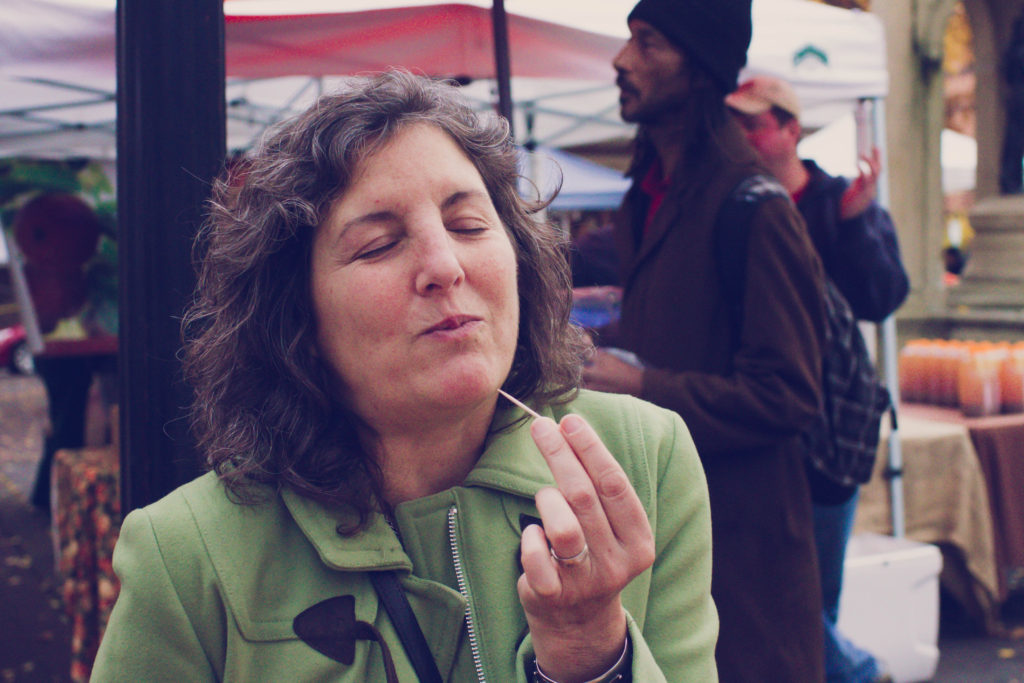
Back when I was a kid growing up in Alabama, my mom would often bring home honey that had been gifted to her by one of the locals. If the jar happened to have a honeycomb in it, my older brother and I would scoop it out, split it in half, and savor every morsel. It was the most delicious treat we could imagine, and I preferred it to cake, cookies and donuts combined. Seriously. Even back then – when my knowledge of good health was minimal at best – I understood that local honey was good for me. To this day, at the first sign of seasonal illness, I whip up a batch of my favorite honey-based, anti-inflammatory “magic paste” as a cure-all for winter ailments.
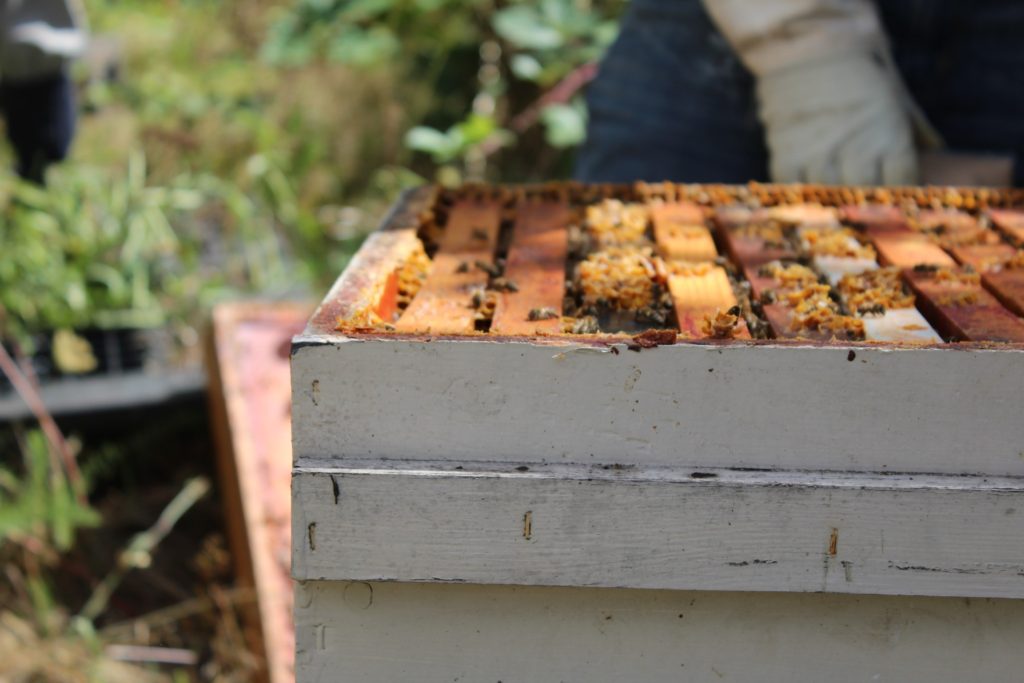
It is an extremely unfortunate circumstance, however, that in recent years honey has become compromised by mass production, pasteurization, and companies that just straight up lie about the amber colored liquid they place in their jars. Honey, at times, isn’t all it’s cracked up to be. While searching for information on the subject, I ran across an article on naturalnews.com that contained the following paragraph:
“Raw honey is honey that has not been heated, pasteurized or processed in any way. The differences between raw and pasteurized honey are substantial. Raw honey is an alkaline-forming food that contains natural vitamins, enzymes, powerful antioxidants and other important natural nutrients. These are the very nutrients that are destroyed during the heating and pasteurization process. In fact, pasteurized honey is equivalent to – and just as unhealthy as – eating refined sugar.”
Wow – that’s some powerful information right there. Yet another reason to be sure you know where you food is coming from. Fortunately for us, we have some great allies in Matt & Madelyn from Mickelberry Gardens. This is who we source our honey from, and when it comes to sustainable bee-keeping practices, these guys know their stuff. Located out in Gresham, Oregon, their beehives are close to our SE Portland production kitchen, making the honey we buy from them local to our area. When you open a jar of their honey, you know you are in for a treat; one taste and you almost instantly feel better. The honey we purchase from Mickelberry is considered to be “low brix” which means that it is thicker, less sweet, and chock full of all the good things. Without this amazing ingredient, our bars would be a very different product. As one of my coworkers recently said, “the honey is the binder that keeps all the other ingredients in suspension”. That Mickelberry honey is special stuff, y’all. Here’s a little info from Matt & Madelyn’s website…
“You may notice that our honey and all of our honey tonics are made with Raw Honey. We are very careful to make sure that none of our honey is ever heated above 100 degrees Fahrenheit. We consider this “hive temperature” – we never allow the honey to reach a temperature higher than it might get inside the beehive on a hot summer day. By maintaining a low temperature honey’s therapeutic virtues, delicate fragrances and flavors, and enzyme content are all preserved. Honey contains the essence of flowers, and also has small amounts of pollen and propolis residues. Keeping it raw ensures it is at peak medicinal potency.”
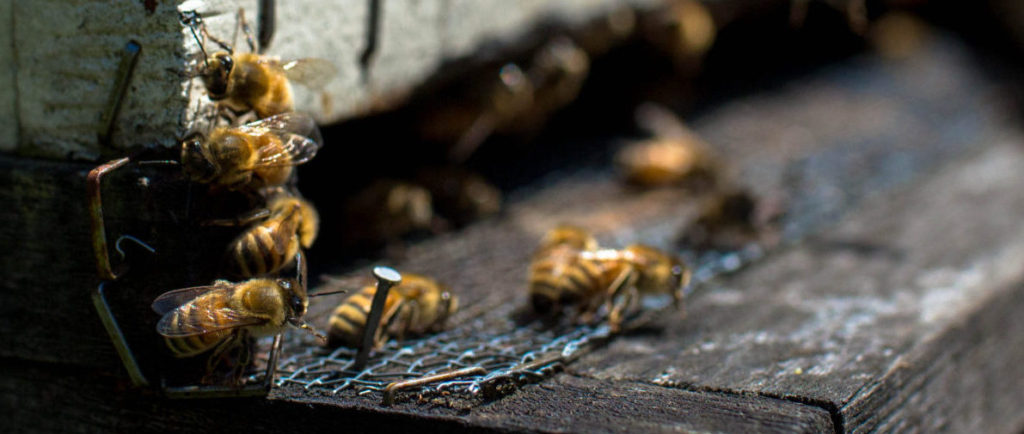
To gather more information about Mickelberry Gardens, please click here. To order their products, you can visit their online store.
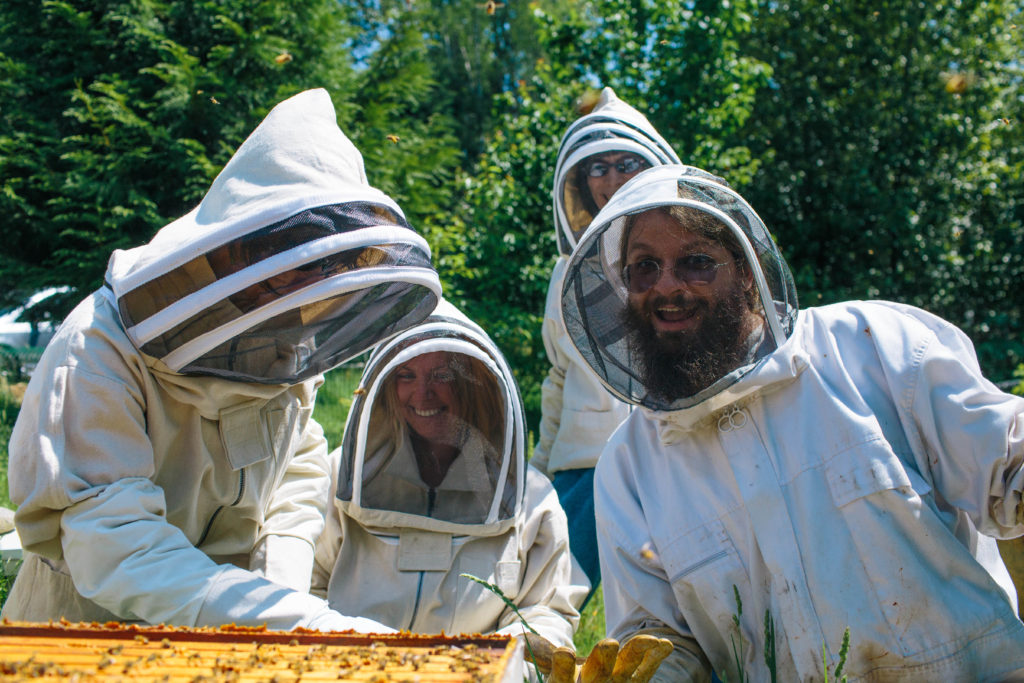
At its best – raw and untainted – honey has a long list of positive attributes. Just to name a few:
- Antioxidants out the wazoo. Researchers say honey contains varying concentrations of polyphenols, which are powerful antioxidants that are thought to reduce the risk of heart disease and cancer.
- Anti-fungal and anti-viral properties. Honey uses a combination of weapons, including hydrogen peroxide, acidity, osmotic effect, high sugar concentration and polyphenols — all of which actively kill bacterial cells. It can be used to treat bladder infections, influenza, skin infections, and the common cold, among others.
- Strengthens the immune system. Honey contains phytochemicals from the plant’s nectar that stimulate the immune system.
- Relieves allergy symptoms. This idea refers to eating honey that is local to your area. Supposedly, when a person eats local honey, they are thought to be ingesting local pollen. Over time, a person may become less-sensitive to this pollen. As a result, they may experience fewer seasonal allergy symptoms.
- Heals wounds. High quality raw honey will help draw fluid away from your wound and suppress the growth of microorganisms.
- Stabilizes blood pressure. The content of enzymes, vitamins, and antioxidants in honey boost immunity and help stabilize blood pressure in the body.
- Balances sugar levels. Raw honey is actually kind of a cool mystery in how it breaks down in the body. It is directly converted to liver glycogen and doesn’t raise blood sugar levels like sucrose or high fructose corn syrup even though it contains the same simple sugars.
- Relieves pain. When combined with cinnamon, honey has strong anti-inflammatory properties that can be used to benefit those suffering from arthritis, toothache, upset stomach, indigestion, and more.
- Calms nerves. Honey is known to contain high levels of tryptophan which helps to reduce anxiety and relax the nerves. It is also known to be rich in potassium, which helps to fight off stress hormones, and has a soothing effect on the brain and body.
- Treats ulcers. Glucose oxidase, an enzyme in honey, produces hydrogen peroxide, which kills harmful bacteria that can contribute to the development of ulcers. There are also other floral antibacterial substances in honey, which come from flowers when bees collect pollen, that add to honey’s effectiveness in eliminating bacteria.
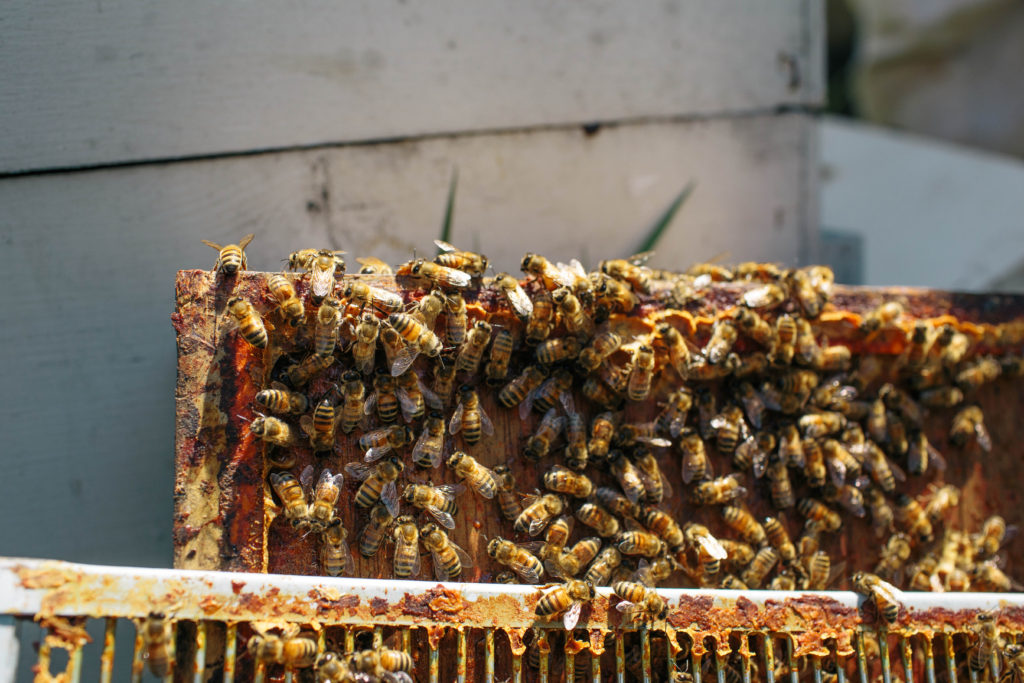
Honey bees are hard-working creatures that do much more than just provide nectar. According to the U.S. Department of Agriculture, these under-appreciated insects pollinate 80 percent of our flowering crops, which constitute one-third of everything we eat. Losing them could affect not only dietary staples such as apples, broccoli, strawberries, nuts, asparagus, blueberries and cucumbers, but may threaten our beef and dairy industries if alfalfa is not available for feed. Unfortunately, our honey bees are in peril. An article released earlier this month states that a species native to Hawaii was just granted protection under the Endangered Species Act. Now is the time to get involved. Donate time, cash, or find out ways to create a bee habitat in your own back yard:
http://www.greenpeace.org/usa/sustainable-agriculture/save-the-bees/
http://thehoneybeeconservancy.org/donate-now/
http://www.honeybeehaven.org/content/take-pledge
http://www.beyondtoxics.org/work/save-oregons-bees/action/
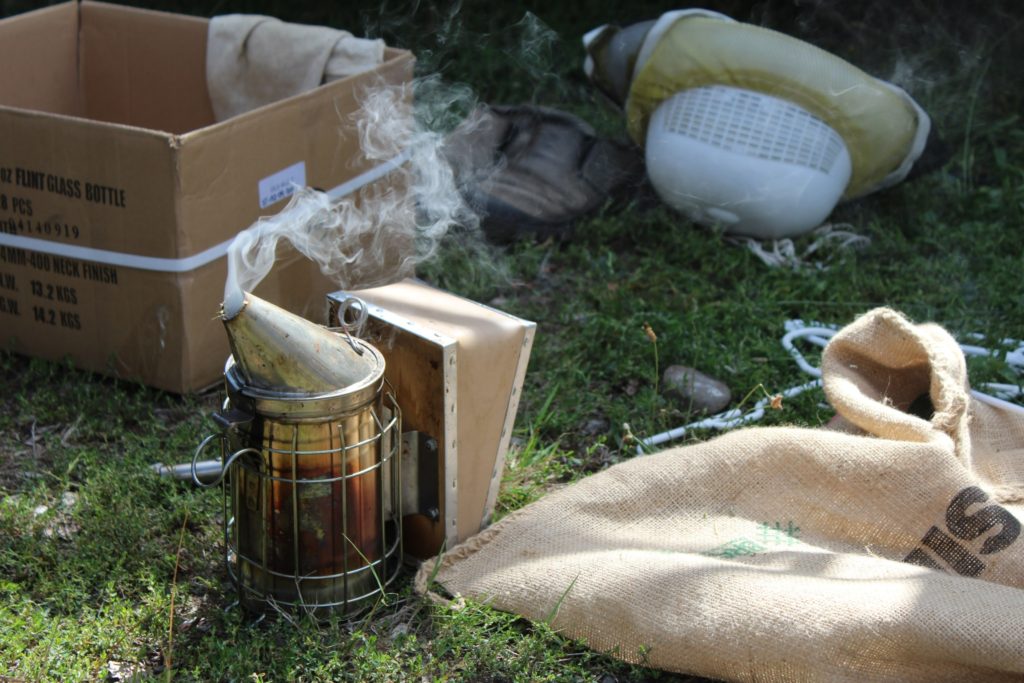
For additional reading:
http://www.bluecollarbees.com/2012/03/can-diabetic-eat-honey-yes-they-can-and.html
http://www.snopes.com/medical/homecure/honey.asp
http://www.drdavidwilliams.com/ulcer-natural-treatments/
http://www.naturalnews.com/035493_raw_honey_health_benefits_antibacterial.html#ixzz4OUipNSHf
http://www.mnn.com/earth-matters/animals/stories/the-importance-of-honeybees
![]()
Related
8 thoughts on “The Magic of Raw Honey”
Comments are closed.

Love your chocolate that i purchased at Arcata Coop!! Just checking to make sure that you don’t use any sesame products in the manufacturing do you?
Hi Linda! Thanks for reaching out. As of now, there are no sesame products in our kitchen. Enjoy!
WoW! Really enjoyed your Nibs and Coffee chocoholic bar my Portland son gave me for Christmas! Love it, Love it, Love it!
Just a thought – these would make really great healthy sport snacks, for biking, skiing, etc……much tastier than the multitudes of bland sport bars on the market.
I know these will be at the top of future Christmas gift lists!
Cheers>JStew
Hi John! We are thrilled that you found us (thank your son for us, please)! We totally agree that our bars are the perfect snack for outdoor sports. All those healthy fats and nutrient-rich ingredients are the best way to refuel an active body. Thanks for reaching out, and happy new year to you!
I just discovered your amazing bars! I am totally hooked! How can something so simple be so good? And good for you. Thank you for making such a great product. As simple as this sounds, your bars are the reason I began to pay much more attention to where my food comes from. Cheers!
Wow, John–we are blushing over here. Thanks so much for your incredibly kind words, and for taking the time to reach out to us. It’s folks like you who keep encouraging us to do what we do.
Didn’t know that raw honey can benefit so much. Thanks for sharing this
Thank you for this post. It is so good when you have a local beekeeper that you can bay raw honey from. Some people never try raw honey and don’t now the difference between honey that they buy in a market and raw honey from a local farm.